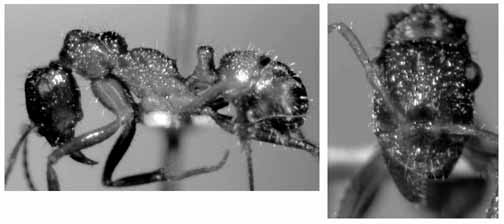
| return to guide introduction | go to genus list |
See Odontomachus below.

Uniform habitus; large; frontal carinae narrow, sublinear, and widely separated. Nest in soil, sometimes surmounted by thatch tube (E. tuberculatum); common.
|
 |
Very diverse habitus; frontal carinae usually narrow and sublinear, always widely separated; sculpture various but often uniformly striate or rugose; metacoxa often with dorsal spur or tooth. Diverse habits, terrestrial and arboreal, uncommon.
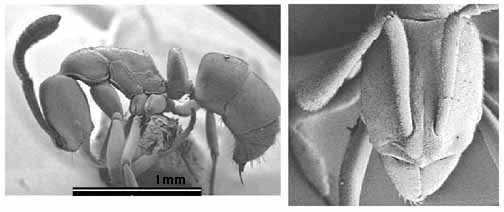
Uniform habitus; all relatively small ants (this figure of one of the larger species); frontal carinae and frontal lobes forming "violin" shape characteristic of Hypoponera and Pachycondyla; eyes usually reduced to few or no facets; mandibles often with teeth reduced to series of denticles; petiole usually thin and scale-like; mesotibia with single apical spur (contrast with Pachycondyla, which has two). Nest in soil, leaf litter, under epiphyte mats; common.

Variable habitus; large to small ponerines; mandibles subtriangular to linear; body usually shiny with variously distributed puncta or rugosity; petiole subquadrate with variously developed posterior angle or projection, never thin and scale-like; long legs (rapid runners when live); promesonotum often small relative to propodeum. Nest in soil or ephemeral in leaf litter; uncommon.
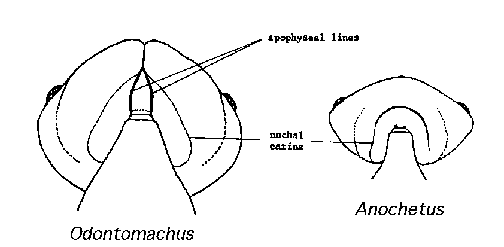

Odontomachus and Anochetus share a similar habitus, with elongate heads and powerful snapping mandibles. The mandibles are sublinear with apical fork, and inserted close together in the head capsule (this mandible structure is seen in the convergent Dacetonini in the Myrmicinae). The two genera can be distinguished by the form of the nuchal carina (see figure). The smallest Odontomachus are approximately the size of the largest Anochetus. Odontomachus are large, active predators, usually foraging on the ground surface or arboreally. Nests are in dead wood (ground and canopy), and in epiphyte mats. Anochetus are more variable. Larger species are conspicuous arboreal ants nesting in carton nests or ant gardens; the majority are small, cryptic ants in leaf litter or under epiphytes.
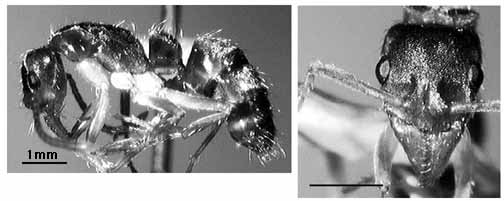
Diverse habitus and size; frontal carinae and frontal lobes forming "violin" shape characteristic of Hypoponera and Pachycondyla; larger species have large eyes, large mandibular teeth, and subquadrate petiole. Smaller species grade into Hypoponera-like forms. Pachycondyla always has two mesotibial spurs, in contrast to Hypoponera's one. Nest in soil, leaf litter, under epiphyte mats; common.
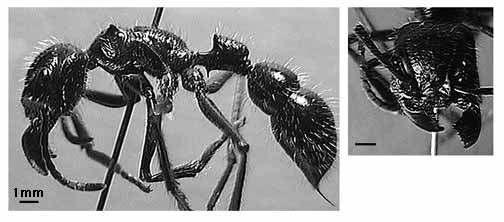
One species (P. clavata); well-known large "bala" ant of lowland wet forest. Nest in ground; arboreal foragers; locally common.
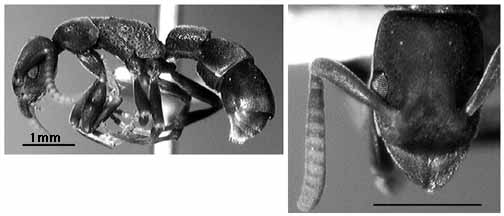
Uniform habitus; color usually silver black, rarely (P. prizo) brown; body surface sericeous with shallow foveae; mandibles lacking teeth or rarely (P. prizo) serrate. Nest in dead wood on ground or in canopy, usually arboreal; moderately common.
Page author:
John T. Longino, The Evergreen State College, Olympia WA 98505 USA. longinoj@evergreen.edu